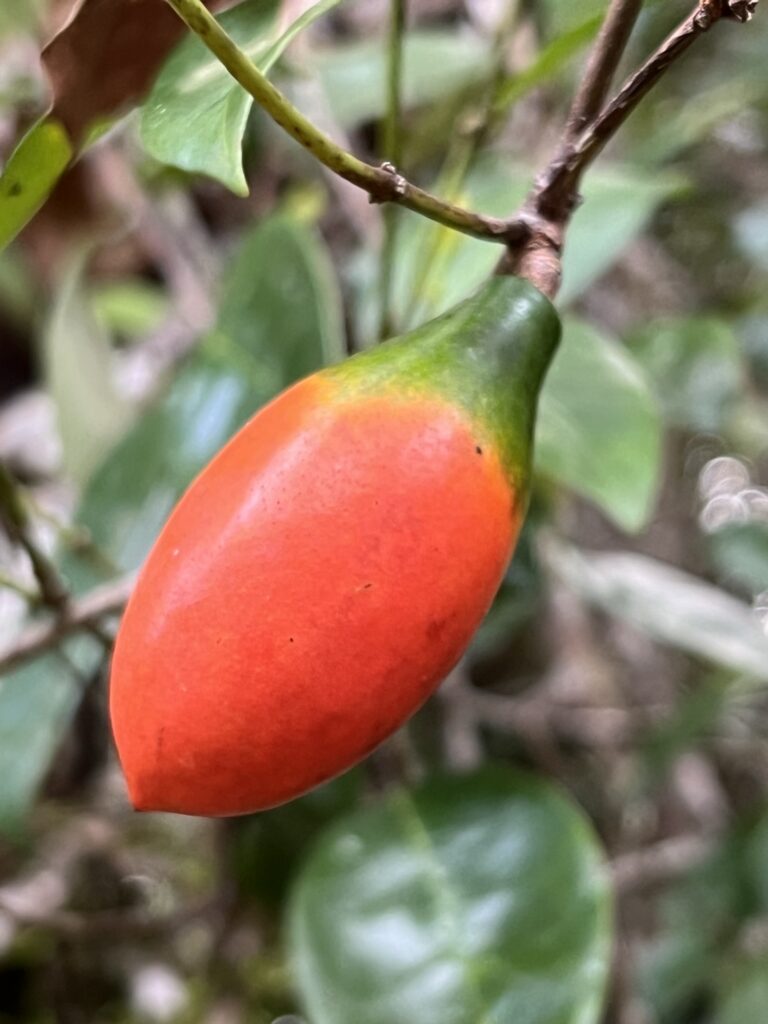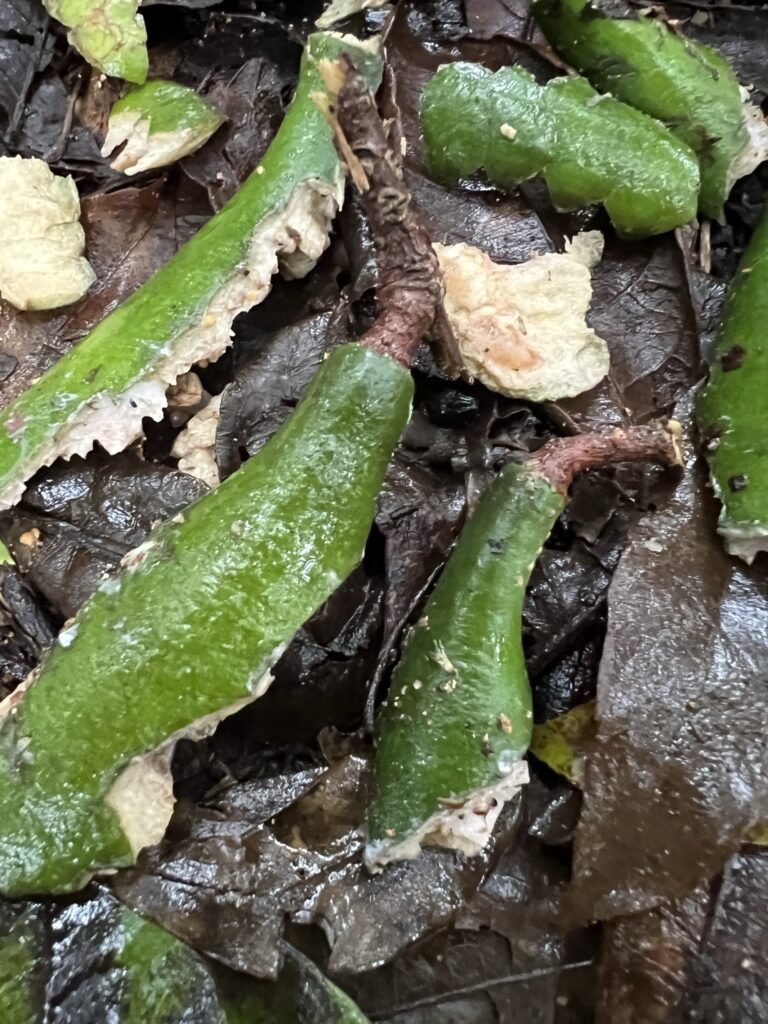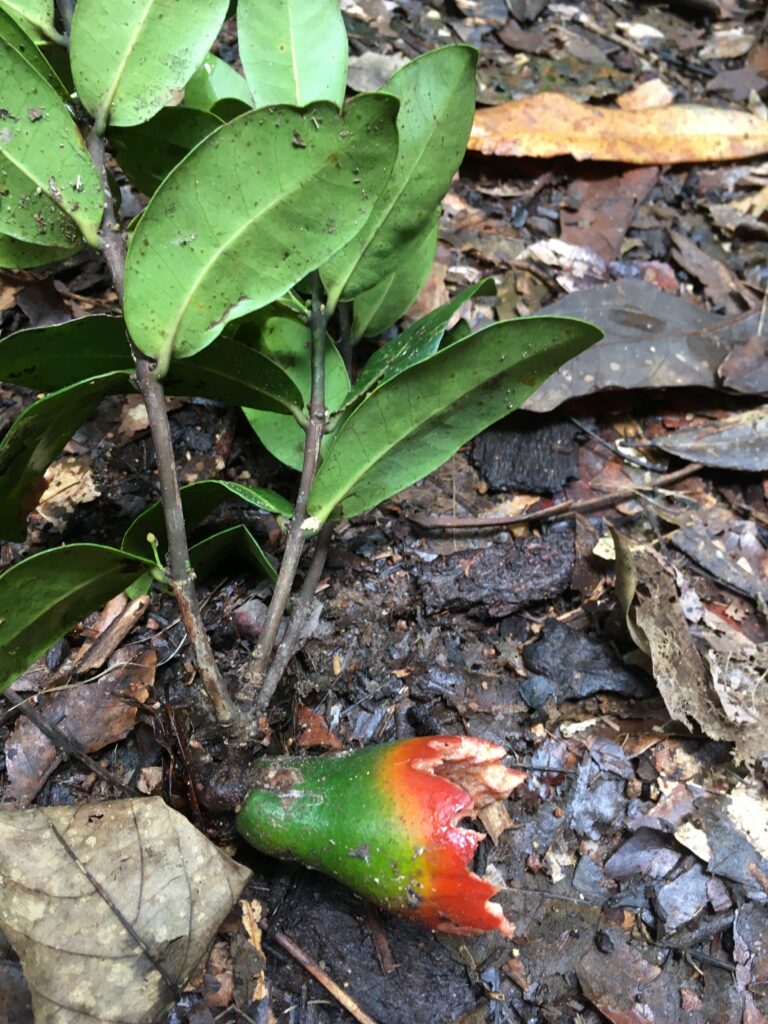Over the last several months, from December last year, I have found the remains of a striking fruit around the village, both on roadsides and along tracks. And more recently I have found some vines with ripe fruit still hanging prominently beside the road opposite the turnoff to McClennan’s Lookout.
Aptly named the Harlequin Fruit, Melodinus australis is a moderately common vine found in a variety of rainforests from central NSW and Eastern Queensland ranging from sea level to 1200m. It is also known as the Bellbird Vine. The genus name Melodinus is derived from the latin words “melon” (= apple) and “dinein” (= twisted) in reference to its twisted viney growth form and the roughly apple-shaped fruit it produces.

This vine, opposite the newly cleared signage area at the turnoff to McClelland’s lookout, is still bearing fruit.
The vine has elongate pointed leaves with a distinct central vein. The flowers are cream to yellow and can be strongly perfumed. The distinctive fruit are initially green and turn orange-red progressively from the distal end, but they always remain green near the area of attachment to the vine.
The genus has 23 species ranging from Indo-Malaya through Greater Australia and the western Pacific Island. They are all climbing plants that belong to belongs to the family Apocynaceae or Dogbanes. This common name refers to the fact that some plants in the family have been known to poison dogs. Harlequin Fruit, however, appears not to be particularly toxic.



The fruit are most often seen on the ground after cockatoos or other birds have fed on them. Even unripe green fruit is taken, although in this case the birds appear strip the outer skin in order to get to the inner flesh.
Judging by the remains of fruit which often litter the forest floor, Cockatoos appear to love this fruit. It is also eaten by cassowaries.
Aboriginals in the Kuranda range are reported to have eaten the fruit. Other sources on the web recommend only eating the coloured portion of the fruit and avoiding any part that exudes white sticky sap.
The harlequin fruit can be propagated from cuttings and seeds, and it will flower and fruit prolifically in large pots.
Text and Photos by Jamie Oliver

Very interesting Jamie. Thanks for sharing